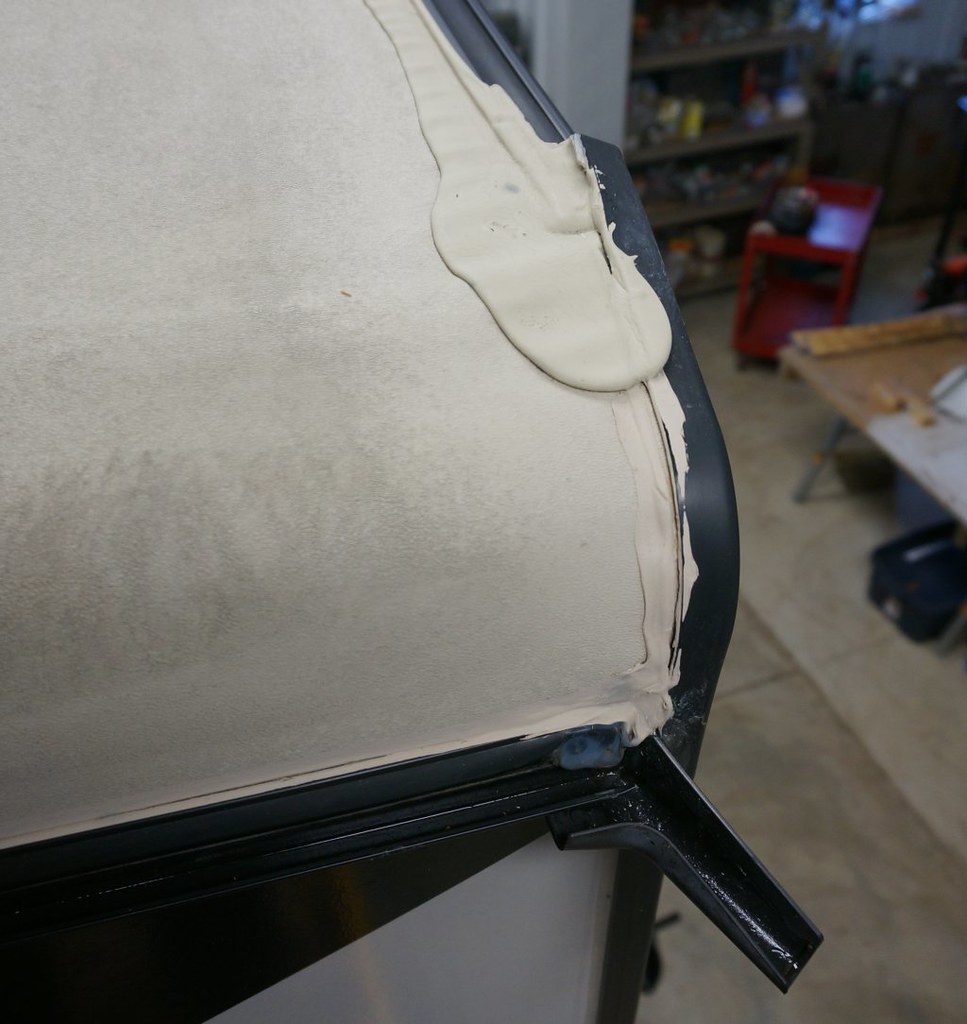JBarca
Dec 03, 2022Nomad II
2019 Keystone 5th wheel - TPO lifting issue
Looking to see if others have seen this TPO lifting issue at the left and right side walls of the roof.
A little background. I am helping out a neighbor who has a 2019 Laredo 5th wheel. They bought it new Dec. 2019. The build date is 10/3/2018. The camper at this point is 4 years old since the build date and 3 years since acquired.
With the mad rush of Covid and the local RV dealers slammed full, they have come to me for help with the roof. I restore older campers from water damage. I have seen enough roof and siding leaks, and done enough roof replacements, to understand what is going on with this roof. This is the first Keystone camper roof I have had apart to see how they approach the roofs on this model & year. The bottom line is, the TPO is lifting from the roof sub straight due to the method of the build.
Earlier this year, they had a tire failure and I repaired the wheel well damage. At that time I saw the start of delamination on the front right wall and my moisture meter confirmed they have a leak. The joint at the front cap to the side wall leaked. I pointed it out to them. I repaired the roof area to stop the leak, and took the left side apart as a pre-emptive repair before it started to leaked. They did not want to go to all the expense of dealing with the minor delam at this point. The front cap would need to come off to dry out the wall. During this repair I saw first hand how Keystone is sealing the roof. I'll leave my personal comments out of this for the moment.
The blue tape shows the limits of leak area. Once the bottom floor area is reached there is too much metal in the floor to tell what is water and what is metal that trick's the meter. Bottom line, there is delam starting at the top down to the bottom.
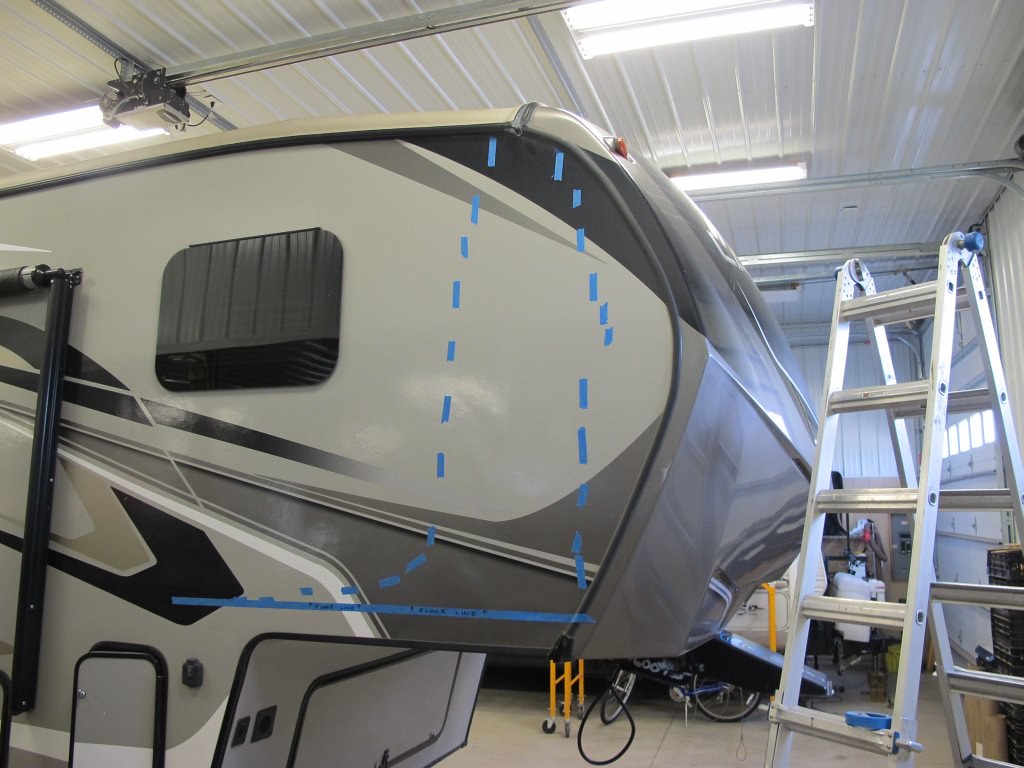
Taking the top cap to roof joint apart, I can see the methods used on the roof build. There is no butyl tape to seal the TPO to the cap, nor to seal the gutter rail to the TPO or sidewall along the main full length of the side wall. The gutter rail screws have no sealing action at the screw level, the vinyl screw cover is the only protection from water intrusion. There is about 12" of butyl on the back side of the gutter rail before the cap joint.
The main decking stops before the sheet metal curve that is stapled to the deck. There appears to be a black tape close to duct tape over the sheet metal staples from the metal to the wood decking. There is no roof adhesive on the metal that is bonding the TPO to the metal. If they used Alfa water based glue, it needs a porous sub straight to bond and metal would not bond. They pull the membrane tight and shoot screws in the gutter rail to hold it down. I'm not sure this is modern day practice for all their roofs like this, but this is what this one has.
See this pic.



Black tape removed at the front area. Still more tape at the metal to decking area going down the length of the side wall.

Staple lift present from flexing and vibration from towing.
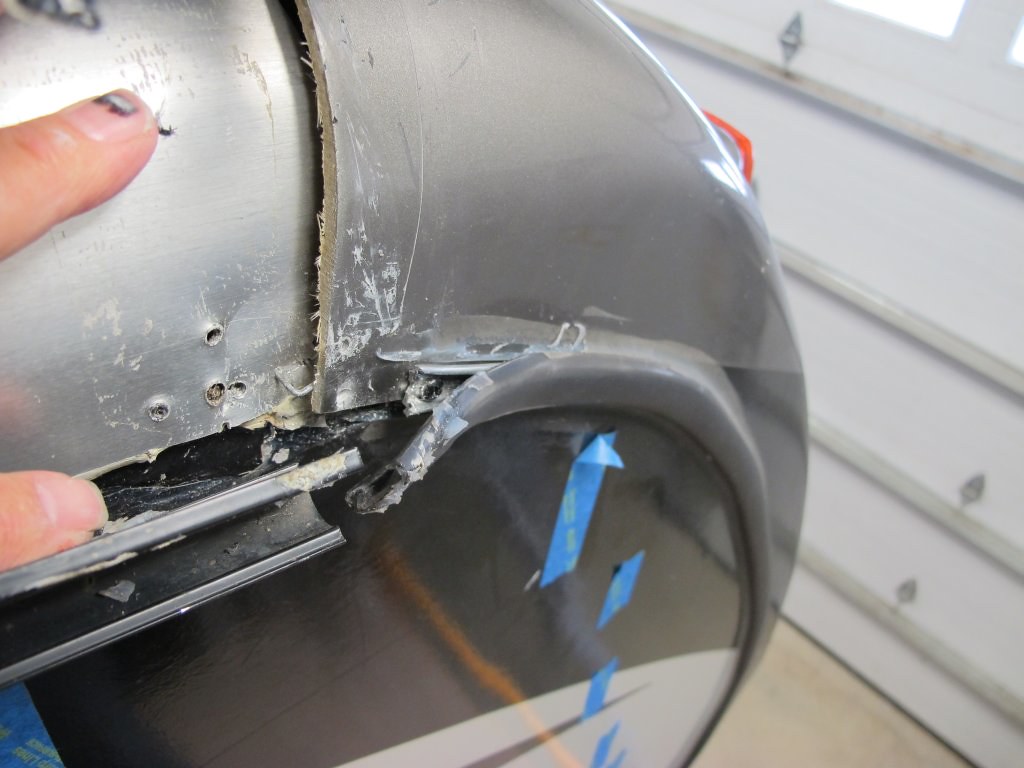
Now the main issue of this post, the full length of the camper on both sides, the TPO is lifting at the end of the sheet metal curve as the TPO goes over the decking. It is puckering up, in some cases 2 1/2" past the end of the metal. You can press the metal down as it breathes. Some staple lift is starting in spots. You can see the puckering here. These 2 pics are from when I went for a roof measurement trip. The black tape if it is full length, will not bond to the glue either.

A more close up
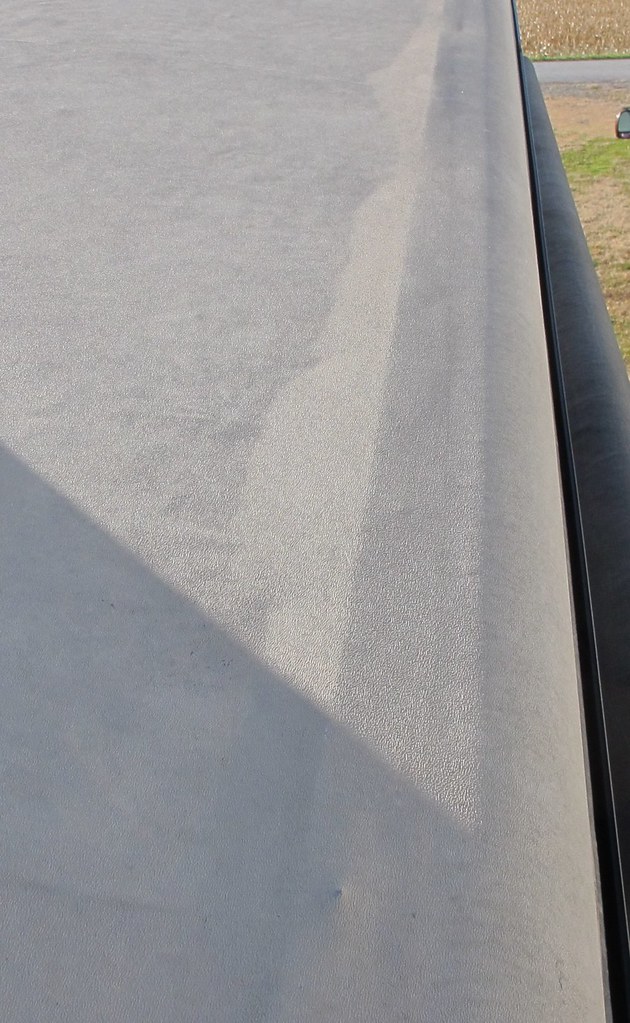
Here is yesterday as I was washing the roof in preparation for the roof sealing. The TPO lift is approaching the shower dome.
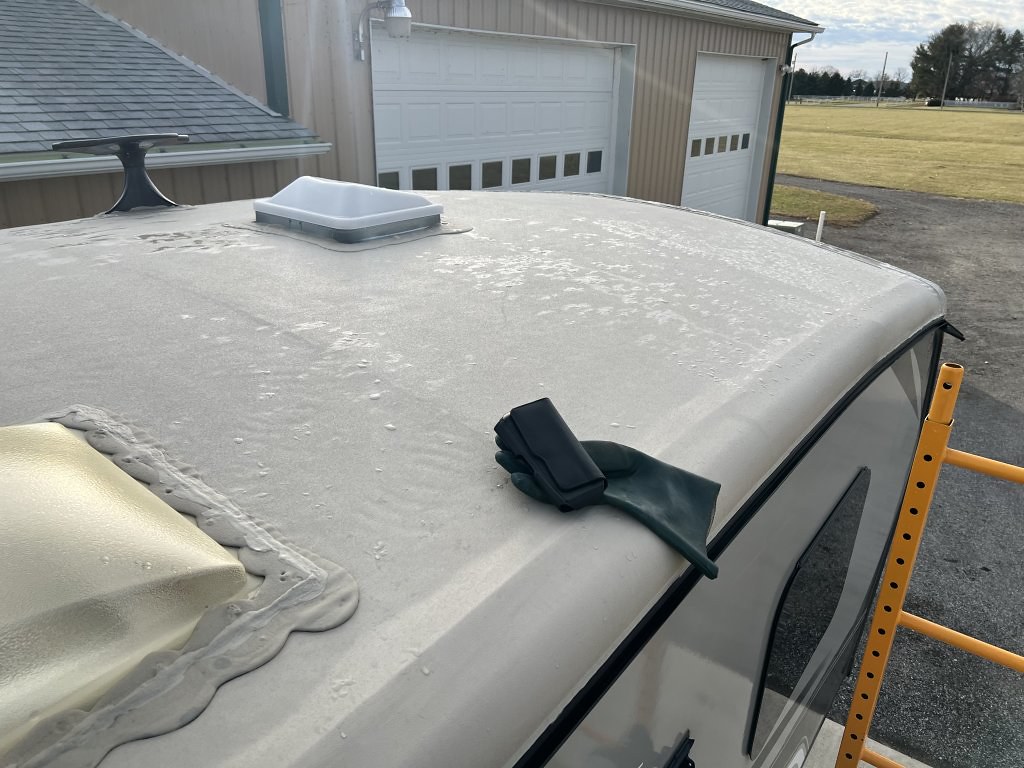
These last 3 pics are from the recent last 2 weeks as I was asked to what can be done to create a permeant solution to get away from roof caulk as the main sealant. Their plan is to keep the camper for a good number of years and it lives outside 24/7 here in the mid west, Snow and rain country. Due to health reasons they cannot service the roof.
Before I start into creating a long term sealant on the roof and joints, I feel I need to deal with this TPO lifting issue. It has doubled in width in the last year. With the staples starting to lift, the metal lifting, the bond to the wood decking is stressed and the TPO will slowly keep lifting wider, how far, good question.
I'm after if anyone had seen this before and what was done if any, to stop it. I know what I would do to repair this, I'm just seeking other options.
Thanks for any feedback.
John
A little background. I am helping out a neighbor who has a 2019 Laredo 5th wheel. They bought it new Dec. 2019. The build date is 10/3/2018. The camper at this point is 4 years old since the build date and 3 years since acquired.
With the mad rush of Covid and the local RV dealers slammed full, they have come to me for help with the roof. I restore older campers from water damage. I have seen enough roof and siding leaks, and done enough roof replacements, to understand what is going on with this roof. This is the first Keystone camper roof I have had apart to see how they approach the roofs on this model & year. The bottom line is, the TPO is lifting from the roof sub straight due to the method of the build.
Earlier this year, they had a tire failure and I repaired the wheel well damage. At that time I saw the start of delamination on the front right wall and my moisture meter confirmed they have a leak. The joint at the front cap to the side wall leaked. I pointed it out to them. I repaired the roof area to stop the leak, and took the left side apart as a pre-emptive repair before it started to leaked. They did not want to go to all the expense of dealing with the minor delam at this point. The front cap would need to come off to dry out the wall. During this repair I saw first hand how Keystone is sealing the roof. I'll leave my personal comments out of this for the moment.
The blue tape shows the limits of leak area. Once the bottom floor area is reached there is too much metal in the floor to tell what is water and what is metal that trick's the meter. Bottom line, there is delam starting at the top down to the bottom.

Taking the top cap to roof joint apart, I can see the methods used on the roof build. There is no butyl tape to seal the TPO to the cap, nor to seal the gutter rail to the TPO or sidewall along the main full length of the side wall. The gutter rail screws have no sealing action at the screw level, the vinyl screw cover is the only protection from water intrusion. There is about 12" of butyl on the back side of the gutter rail before the cap joint.
The main decking stops before the sheet metal curve that is stapled to the deck. There appears to be a black tape close to duct tape over the sheet metal staples from the metal to the wood decking. There is no roof adhesive on the metal that is bonding the TPO to the metal. If they used Alfa water based glue, it needs a porous sub straight to bond and metal would not bond. They pull the membrane tight and shoot screws in the gutter rail to hold it down. I'm not sure this is modern day practice for all their roofs like this, but this is what this one has.
See this pic.



Black tape removed at the front area. Still more tape at the metal to decking area going down the length of the side wall.

Staple lift present from flexing and vibration from towing.

Now the main issue of this post, the full length of the camper on both sides, the TPO is lifting at the end of the sheet metal curve as the TPO goes over the decking. It is puckering up, in some cases 2 1/2" past the end of the metal. You can press the metal down as it breathes. Some staple lift is starting in spots. You can see the puckering here. These 2 pics are from when I went for a roof measurement trip. The black tape if it is full length, will not bond to the glue either.

A more close up

Here is yesterday as I was washing the roof in preparation for the roof sealing. The TPO lift is approaching the shower dome.

These last 3 pics are from the recent last 2 weeks as I was asked to what can be done to create a permeant solution to get away from roof caulk as the main sealant. Their plan is to keep the camper for a good number of years and it lives outside 24/7 here in the mid west, Snow and rain country. Due to health reasons they cannot service the roof.
Before I start into creating a long term sealant on the roof and joints, I feel I need to deal with this TPO lifting issue. It has doubled in width in the last year. With the staples starting to lift, the metal lifting, the bond to the wood decking is stressed and the TPO will slowly keep lifting wider, how far, good question.
I'm after if anyone had seen this before and what was done if any, to stop it. I know what I would do to repair this, I'm just seeking other options.
Thanks for any feedback.
John





